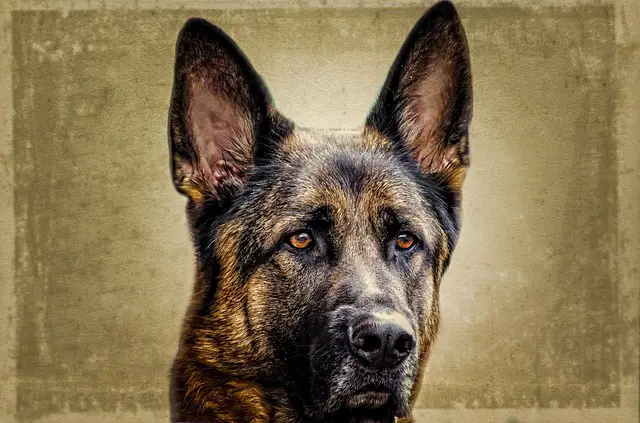When comparing the Alsatian Dog vs the German Shepherd, you might be wondering if they are separate dogs.
Most people know what a German Shepherd is, but what is an Alsatian? Where does that name come from?
Are Alsatians different to German Shepherds, or are they the same?
In this very short guide, we aim to give you the answers to those questions, including the history and origins behind the names.
Let’s jump into it!
(NOTE: this is a general information guide only, and is not professional advice, or a substitute for professional advice. A qualified vet or animal expert is the only person qualified to give you expert advice in regards to your pet/s)
Alsatian Dog vs German Shepherd: What Are They + Is There A Difference?
Are Alsatians and German Shepherds the same, or different breeds?
Alsatian and German Shepherd are phrases used to describe the same dog breed.
Although now, the official name for the breed is the German Shepherd.
What Is An Alsatian and Where Does The Name Come From?
We’ve established that ‘Alsatian’ is a phrase used to describe the German Shepherd breed of dog, but where does that phrase come from?
We actually discussed the origin, history and evolution of the German Shepherd breed and the different bloodlines within the breed in this guide.
As a summary, German Shepherds were first systematically bred and registered as a breed in Germany, around the year 1899.
The first German Shepherd was exported to America in roughly 1907, and to other parts of the world like the UK not long after.
In the US and the UK, the German Shepherd clubs and German Shepherd breed carried the German Shepherd name.
However, Germany’s involvement in WWI, but more significantly in WWII – when the Nazis came about, meant the breed’s popularity dipped.
Dog clubs and German Shepherd enthusiasts in particular in the UK wanted to distance themselves from the German Shepherd name, and also feared the dog breed would fall out of favor altogether.
Not only did no one support what the Nazis were doing, but the media in particular brought negative attention to anything German/Nazi related around that time up until 1945 when WWII ended.
Dog clubs in the UK replaced the words German Shepherd with Alsatian, and some used Alsatian with (German Shepherd) in brackets, or vice versa.
After WWII, some changed the names back to German Shepherd or some variation that brought the original term back.
By around 1977, which is just before the American AKC breed standard was approved, and when European SV standards were being updated or revised, the German Shepherd was essentially referred to as that name again worldwide – with ‘Alsatian’ being removed from any reference.
The actual name or word ‘Alsatian’ is believed to have been given to the dog by the UK armed forces, and named after the Alsace region of the Alsace-Lorraine area on the German/French border.
There is an alternate theory out there that ‘Alsatian’ is a phrase that was invented to refer to the Shepherd type dogs that weren’t a registered breed or standardised, but were specific to that particular area.
Although, there is no hard evidence on factors such as breeding programs or other documentation that we could find to support this.
More Information & Facts About The German Shepherd Dog Breed
We’ve put together this guide with over 100 interesting pieces of information and facts about the German Shepherd Dog Breed.
Friendly Disclaimer
TheDailyShep.com are not veterinarians, or animal professionals/experts. Information provided is for informational purposes only – it is not a substitute for professional or qualified advice.
The information is based on either our own thorough research, and/or own experiences, as a means of free speech.
By consuming this information, you accept that TheDailyShep.com do not have client or patient relationship with you, and TheDailyShep.com are not advising you to act on anything you read.
You should always consult your own veterinarian, animal expert, or health care professional and follow their advice before making decisions on all matters.
You can find our full set of disclaimers and T & C’s in the footer of this site.
Enjoy your reading, and thank you for being here
','' ); } ?>
